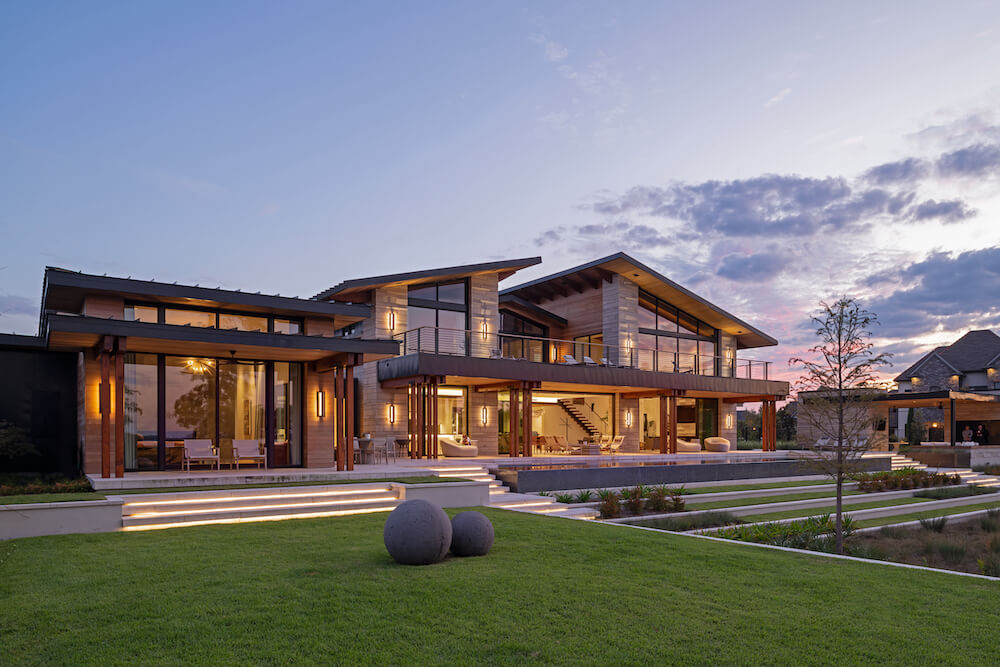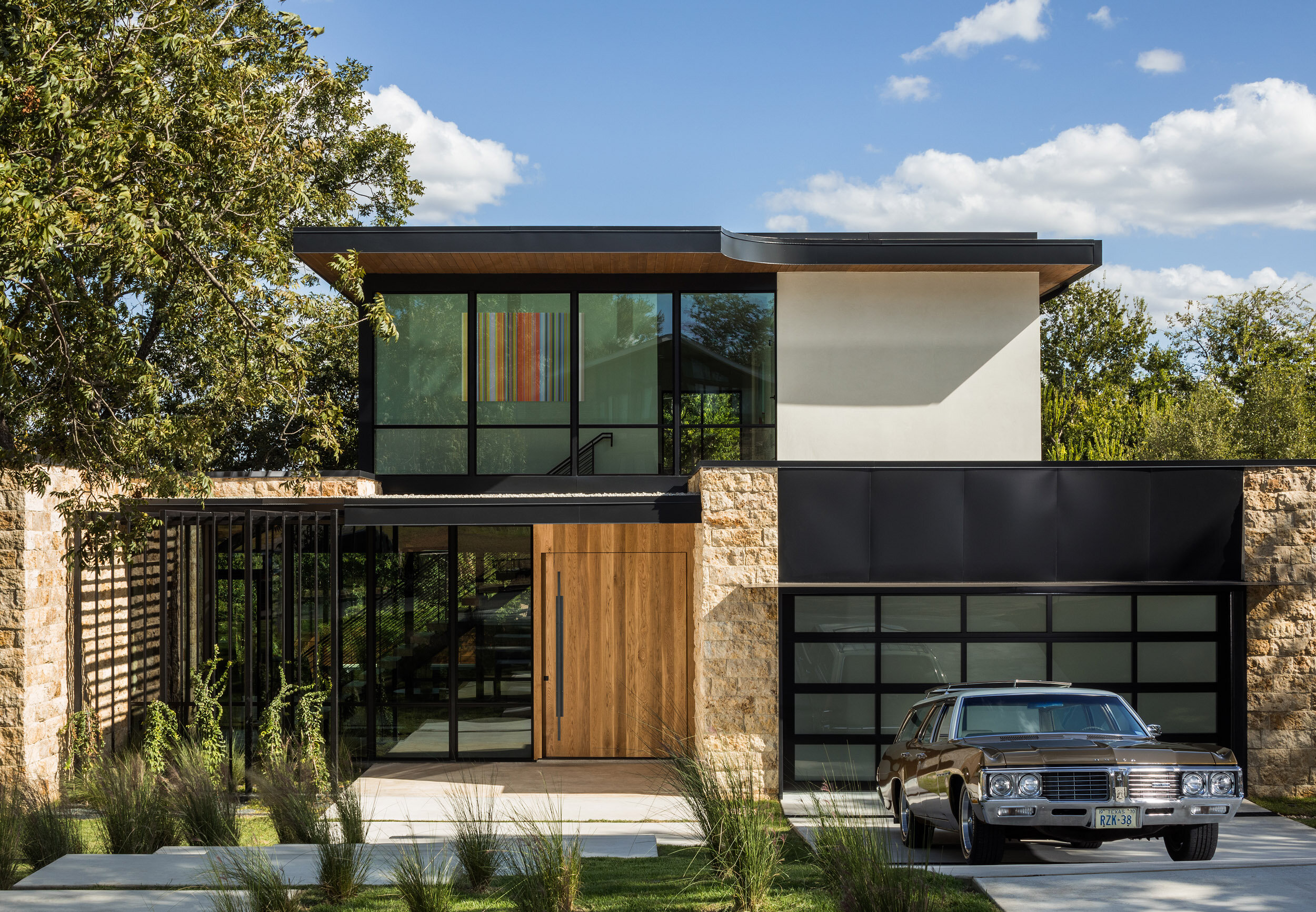Residential Architectural Firm Specializing in Custom Home Design Solutions
Residential Architectural Firm Specializing in Custom Home Design Solutions
Blog Article
Top Trends in Residential Architecture You Ought To Find Out About
As household design proceeds to advance, several engaging patterns are shaping the means we design and inhabit our space. Key growths such as sustainable structure methods, the combination of wise home technology, and the increase of modular homes emphasize a substantial change in the direction of both performance and ecological responsibility. Additionally, ideas like open strategy living and biophilic layout are redefining our communication with room and nature. Understanding these patterns not just notifies layout selections but additionally discloses wider effects for lifestyle and neighborhood - residential house architect. What might these technologies mean for the future of domestic living?
Sustainable Building Practices
An enhancing variety of residential projects are embracing sustainable building methods, driven by a growing recognition of environmental impact and power effectiveness. This shift is identified by the integration of environment-friendly materials, energy-efficient layouts, and cutting-edge building and construction approaches. Property owners and builders are significantly focusing on using renewable energies, such as bamboo and recycled metals, which not only minimize the carbon impact yet likewise boost the durability and visual charm of buildings.
Incorporating energy-efficient systems is another critical facet of sustainable structure - residential house architect. Attributes such as high-performance insulation, energy-efficient home windows, and photovoltaic panels are ending up being requirement in new residential layouts. These aspects not just add to reduced energy usage but also give considerable long-lasting cost savings for house owners
Furthermore, the layout of sustainable homes usually emphasizes all-natural light and ventilation, decreasing the dependence on synthetic illumination and environment control systems. Landscaping techniques, such as xeriscaping, more promote sustainability by minimizing water usage.
As the demand for sustainable living solutions remains to climb, the domestic design sector is poised to innovate and adapt, making sure that future homes are not only environmentally accountable yet additionally comfy and functional for their occupants. - residential house architect
Smart Home Technology
Smart home innovation is reinventing the means property owners connect with their space, enhancing benefit, energy, and protection management. This innovative technique integrates different tools and systems, permitting individuals to manage their homes from another location or via automated processes. Central to this fad is the usage of wise devices such as thermostats, lights, protection electronic cameras, and home appliances, all connected using the Web of Points (IoT)
One of one of the most attractive attributes of clever home innovation is the ability to personalize setups for ideal energy effectiveness. House owners can monitor energy use and adjust air conditioning, heating, and lights based upon their routines, dramatically reducing energy costs. Innovative safety and security systems furnished with smart locks and security cams supply tranquility of mind, allowing remote surveillance and informs to potential safety breaches.
Assimilation with voice-activated assistants boosts individual experience, enabling property owners to regulate gadgets with straightforward voice commands. As modern technology continues to advance, the potential for clever home systems to enhance high quality of life expands, making them a vital factor to consider in modern-day domestic style. Inevitably, clever home innovation is not just a trend however a fundamental shift towards extra smart living atmospheres.
Open Principle Living
Open up idea living has actually become a defining Learn More feature in contemporary property style, characterized by the elimination of standard obstacles in between spaces. This design philosophy promotes fluidity and connectivity within the home, enabling a smooth transition between areas such as the kitchen area, eating, and living spaces. By removing wall surfaces and dividings, open principle formats develop a feeling of space, fostering an inviting environment that improves social communication.

Additionally, this method to household style aligns with minimalism, focusing on practical simplicity and aesthetic comprehensibility. House owners value the versatility of these designs, which can be easily adjusted to reflect individual design with furniture plan and style. As open principle living continues to get traction, it continues to be a testimony to progressing family members dynamics and the need for homes that enhance link and convenience.
Biophilic Design
Biophilic layout has actually come to be progressively significant in household design, emphasizing the inherent link in between human beings and nature. This design approach looks for to incorporate natural aspects into living spaces, therefore fostering a feeling of health and improving the lifestyle for occupants. By integrating functions such as all-natural light, vegetation, and natural products, biophilic design advertises an unified partnership in between indoor atmospheres and the environment.
Secret elements of biophilic design include big windows that offer unhampered sights of outside landscapes, living walls that present plant right into interiors, and open floor plans that encourage air movement and natural light penetration. Water features, both within and outside the home, serve to develop soothing atmospheres and improve sensory experiences.
Additionally, the usage of sustainable products not just sustains environmental stewardship however likewise contributes to much healthier indoor air quality. As understanding of ecological issues rises, house owners are progressively prioritizing designs that mirror their connection to nature. Essentially, biophilic design not just raises visual charm but likewise addresses emotional and psychological needs, making it an essential Extra resources pattern in contemporary property architecture.
Modular and Prefab Homes

Furthermore, prefab and modular homes are developed with sustainability in mind. Numerous makers utilize green products Website and energy-efficient systems, such as photovoltaic panels and progressed insulation methods, adding to reduced power intake and reduced utility costs for homeowners. The flexibility of design choices permits modification, satisfying diverse aesthetic preferences and useful demands.
As the need for budget friendly real estate continues to rise, prefab and modular homes present a viable remedy, addressing both financial and environmental obstacles. Neighborhoods are significantly identifying the possibility of these frameworks, incorporating them right into rural and metropolitan settings. Overall, the trend toward prefab and modular homes symbolizes a change toward extra lasting, reliable, and adaptable living settings, making them a crucial aspect of contemporary property architecture.
Verdict
In conclusion, the progressing landscape of domestic architecture showcases considerable patterns that focus on health, modern technology, and sustainability. Lasting structure methods and wise home innovations improve performance and convenience, while open principle living and biophilic layout foster social communication and a connection to nature. Moreover, the surge of modular and prefab homes supplies customizable and budget friendly remedies, mirroring a wider shift in the direction of useful and accountable living. These patterns jointly emphasize a commitment to producing cutting-edge and harmonious domestic settings.
Key growths such as sustainable building practices, the assimilation of smart home innovation, and the increase of modular homes emphasize a significant change in the direction of both performance and environmental duty.The increase of prefab and modular homes has changed the property style landscape, offering ingenious remedies for reliable and lasting living.Furthermore, prefab and modular homes are designed with sustainability in mind. On the whole, the fad toward prefab and modular homes indicates a change toward much more lasting, effective, and versatile living atmospheres, making them a critical aspect of modern property style.
Lasting structure methods and clever home technologies improve effectiveness and ease, while open concept living and biophilic layout foster social communication and a link to nature.
Report this page